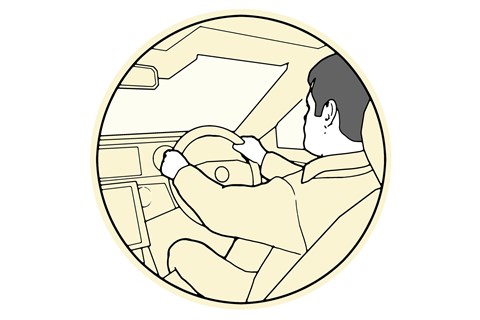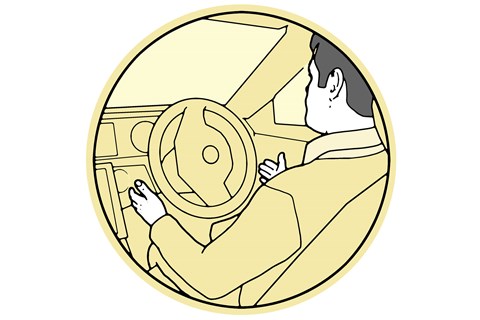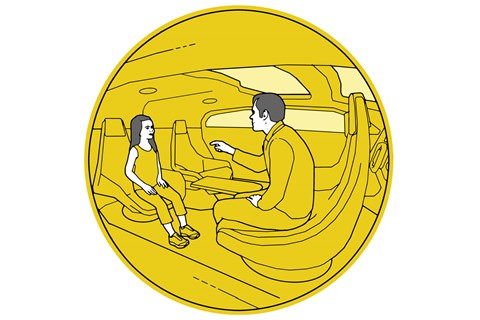► Level 1-5 autonomous car levels explained
► What each level of driverless tech means
► Today we’re at Level 2, and 3 is very near
If you’re interested in the future of transport, you’ll probably have heard of the autonomous car levels already. Simply put, they’re a set of guidelines determined by the Society of Automotive Engineers (SAE) to describe the differing levels of autonomy in driverless cars.
There are currently five levels in total – we’ll explain why that’s happened in a bit – with Level 1 being the most basic and Level 5 being the most advanced forms of self-driving cars. It covers everything from simple feet-off cruise control to full hands-off everything.
Autonomy is a hot topic right now and the UK government is grappling with how to update legislation to allow for driverless cars on our roads. They’re even planning to mandate that the driver could be watching television while the car takes over. Read more on the legal situation around autonomous cars in our handy explainer.
Further autonomous reading
What are the different levels of self-driving tech?
It’s pretty straightforward. What is now called Level 1 has been around for many years now, and Level 2 is commonplace too. We’re on the cusp of Level 3 and the next big thing – proper hands-off driving for long periods of time – is called Level 4 and, ultimately Level 5.
This is the sci-fi vision of the future where cars are doing everything for you.

For the past few years, car brands have begun to pick up and use the autonomous level terminology – the Audi A8’s Level 3 autonomous skillset was heavily promoted at its launch – but what the levels are, or what they actually mean, isn’t widely publicised.
To make things easier, we’ve explained every level of driverless tech, as well as who’s in control, what features they include, and when they’ll be on our roads.
Level 1 autonomous cars: a single aspect is automated

The SAE, the Society of Automotive Engineers, has created a lexicon of autonomy. Level 1, the most basic type, is where one element of the driving process is taken over in isolation, using data from sensors and cameras, but the driver is very much still in charge. This started in the late 1990s at Mercedes-Benz, with its pioneering radar-managed cruise control, while Honda introduced lane-keep assist on the 2008 Legend. These were the first steps towards removing the driver’s duties behind the wheel.
- When? The first steps in 1990s/00s
- Includes: Lane-keep assist, auto cruise control
- Who’s driving? Driver is still in control
Level 2 driverless cars: chips control two or more elements

Level 2 autonomy is mostly where we’re at today: computers take over multiple functions from the driver – and are intelligent enough to weave speed and steering systems together using multiple data sources. Mercedes says it’s been doing this for most of the past decade. The latest Mercedes S-Class is Level 2-point-something. It takes over directional, throttle and brake functions for one of the most advanced cruise control systems yet seen – using detailed sat-nav data to brake automatically for corners ahead, keeping a set distance from the car in front and setting off again when jams clear, with the driver idle.
- When? Current state of the art
- Includes: Lane-change mode, self-parking features, driver monitoring etc
- Who’s driving? Human still hands-on at all times
Level 3 autonomous cars: the car can boss safety-critical functions
Highly automated vehicles are beginning to arrive on UK roads. The SAE calls Level 3 ‘conditional automation’ – a specific mode which lets all aspects of driving be done for you, but crucially the driver must be on hand to respond to a request to intervene. Audi calls its A8 a ‘Level 3 ready’ autonomous car and the BMW 7-series is launching hands-off motorway cruising – meaning the car has the potential to drive itself in certain circumstances, where it will assume control of all safety-critical functions. How? By refining maps, radar and sensors and fusing this environmental data with ever-wiser and faster processors and logic. Today’s assumption of a two-second comms lag will soon look very slow.
- When? The next big thing: 2023/24
- Includes: Next-gen sensors, algorithms, new laws
- Who’s driving? Driver still on standby, but can be hands-off for periods of time
Level 4 driverless cars: fully autonomous in controlled areas

By the second half of this decade cars will fully drive themselves in geofenced metropolitan areas, as HD mapping, more timely data, car-to-car comms and off-site call centres (to deal with unusual hazards) improve accuracy. ‘You won’t really need the driver in Level 4,’ says Merc’s autonomous guru Christoph von Hugo. ‘The likelihood is you will just be renting the car, rather than owning it. You won’t take this car on vacation to Florida but you’ll take it on an urban journey around New York, say. It is easier to have ultra-detailed mapping for carefully defined areas.’
- When? Due the second half of the decade
- Includes: Driverless cars, shared pods
- Who’s driving? Genuine hands-off driving
Level 5 driverless cars: fully autonomous, anywhere. Driver optional…

The difference between Level 4 and 5 is simple: the last step towards full automation doesn’t require the car to be in the so-called ‘operational design domain’. Rather than working in a carefully managed (usually urban) environment with lots of dedicated lane markings or infrastructure, it’ll be able to self-drive anywhere. How? Because the frequency and volume of data, the rapid development of artificial intelligence (AI) and the sophistication of the computers crunching it, will mean the cars are sentient. It’s a brave new world – and one that Google’s Waymo car is gunning for, leapfrogging traditional manufacturers’ efforts. The disruption will be huge: analysts HIS forecast 21 million autonomous vehicles globally by 2035.
- When? Not long after Level 4, so later this decade (if you believe the optimists!)
- Includes: Far-roaming robotaxis
- Who’s driving? Steering wheel optional